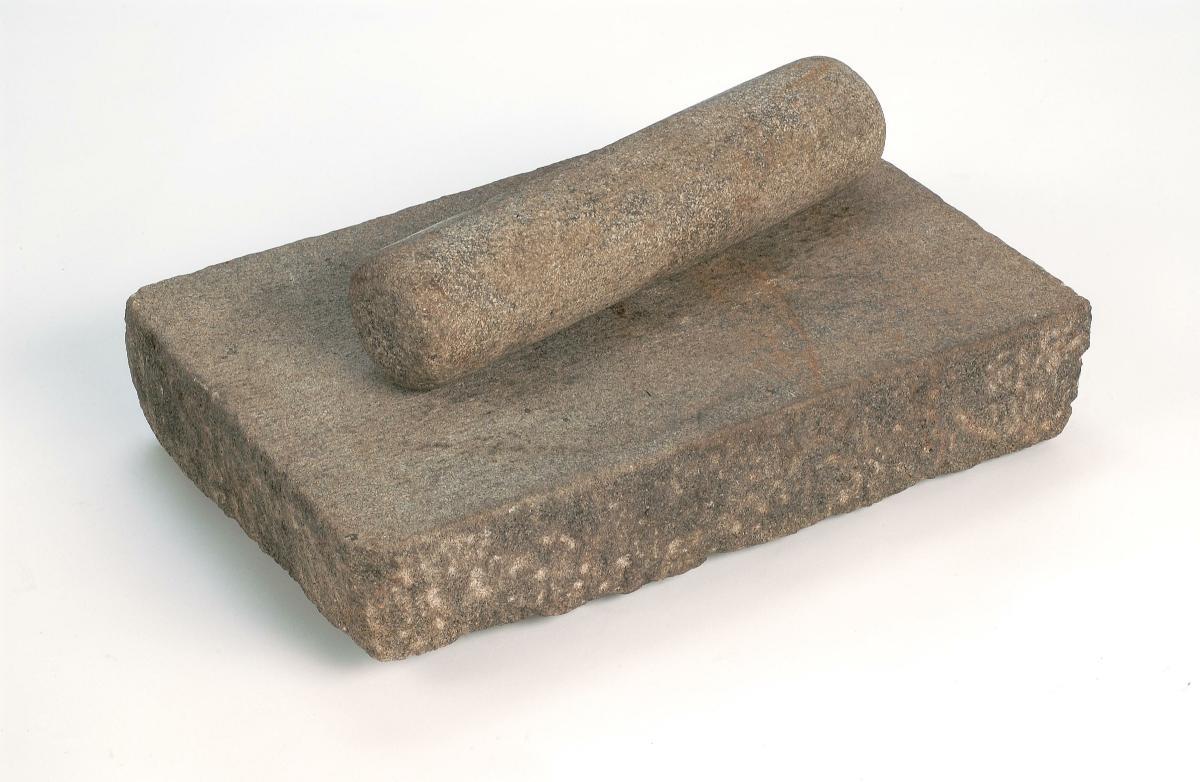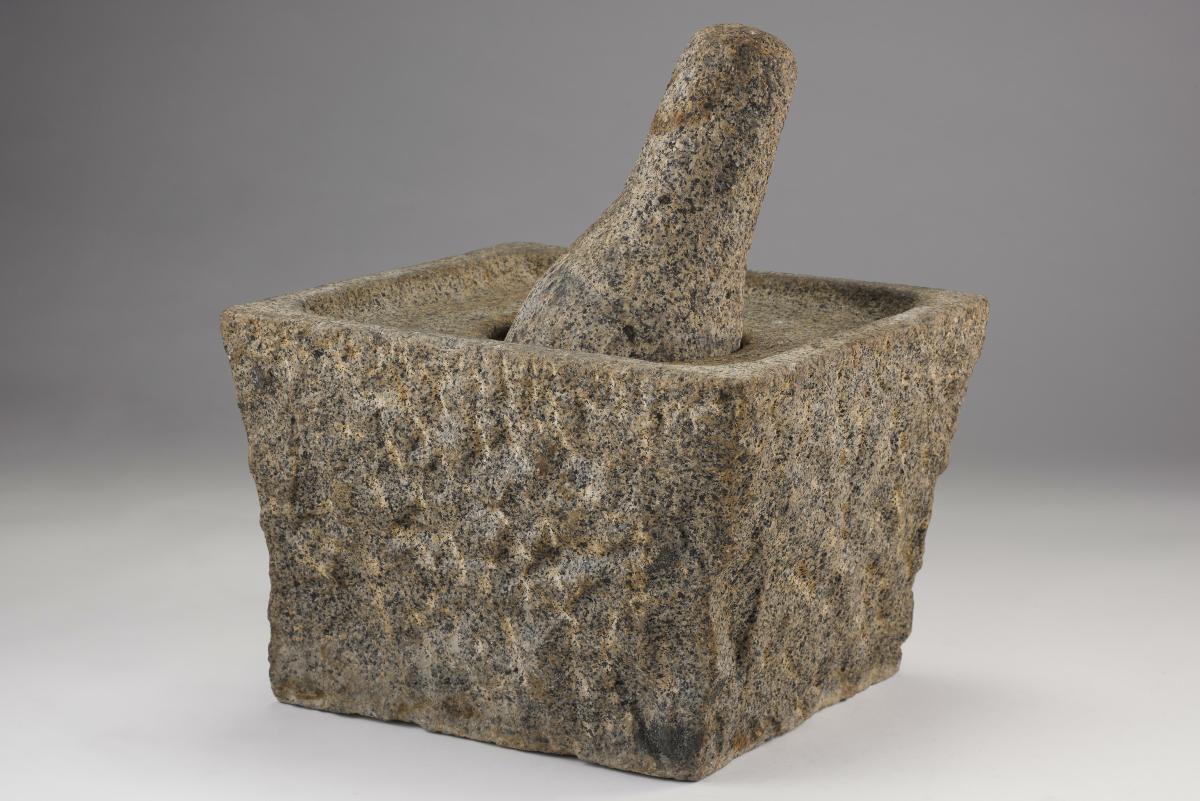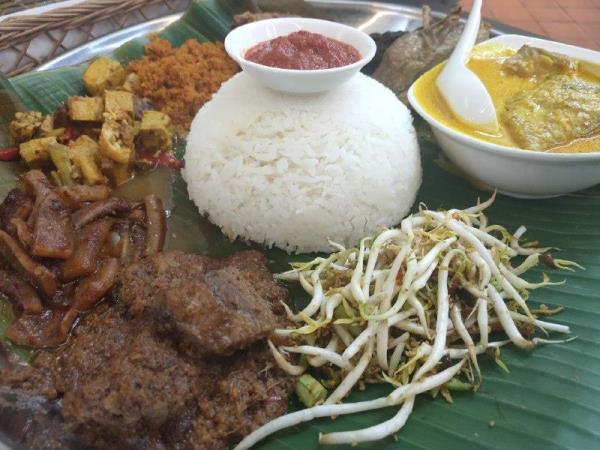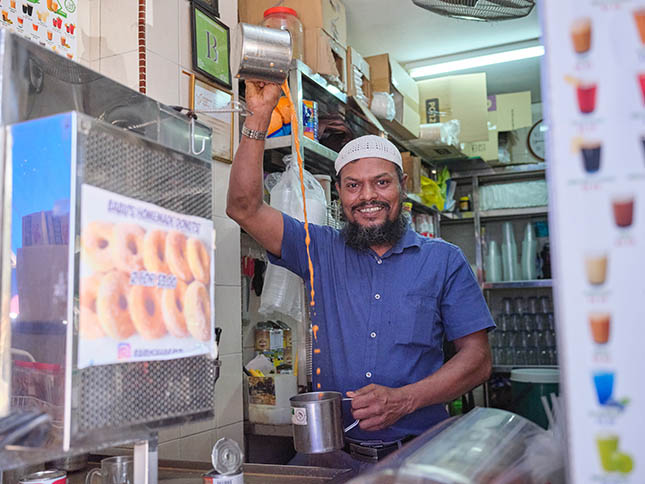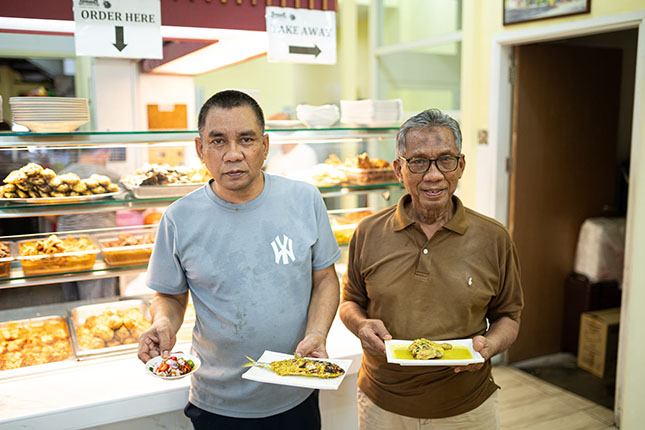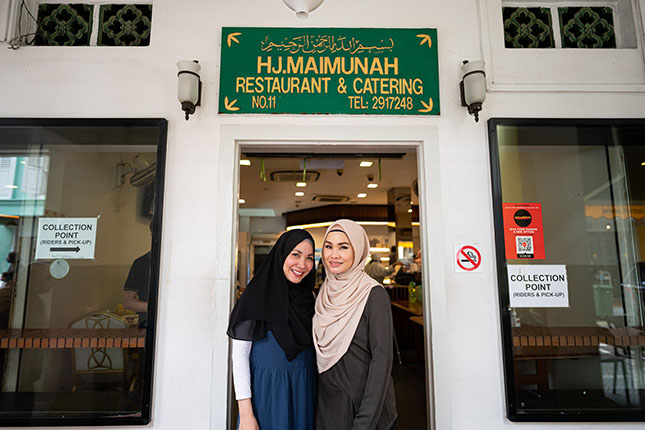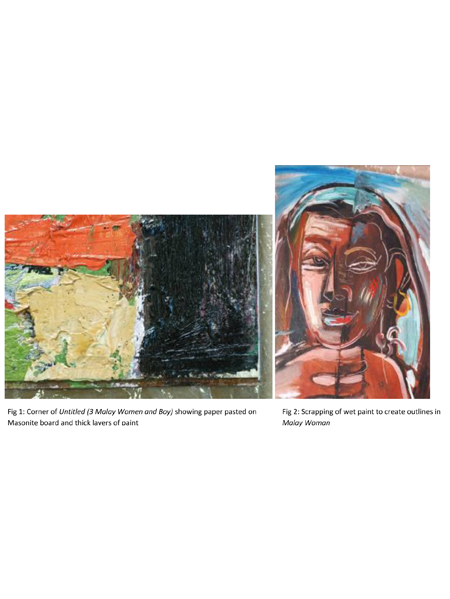Making and Use of Sambal
Sambal is a spicy relish which serves as both a core ingredient and side dish of Chinese, Malay, Peranakan, Eurasian cuisines in Singapore, and neighbouring countries such as Malaysia and Indonesia. Typically consisting of fresh chillies, shrimp paste, lime juice, sugar, and salt; sambal - in its various flavours and forms - has both a rich history and an extensive presence in the preparation of a myriad of familiar local dishes. Traditionally, sambal is used as an all-purpose condiment to add heat and flavour to marinades, dips, sauces, and spreads, and to accompany dishes such as nasi lemak, char kway teow, and laksa.
Additionally, the making of sambal is an intricate and time-old tradition, bringing families and communities together in the preparation and sharing of this versatile and ubiquitous dish that has come to be synonymous with Singaporean cuisine.
Geographic Location
The word ‘sambal’ is of Javanese and Sudanese origin, and while it is difficult to ascertain exactly when sambal was created, it is likely linked to the arrival of the Portuguese in Southeast Asia in the early 16th century, who brought with them ‘New World’ plants such as peppers and chillies from their conquests in the Americas. The founding of modern Singapore in 1819 saw incoming waves of immigrants and travellers from around the world, with the resulting interactions of multiple cultures and intermingling of traditions and heritage - such as Indonesian and Portuguese influences - on the various ethnic cuisines in Singapore. The prevalence of sambal in Singapore was mentioned as early as 1879, where J. D. Vaughan’s book, ‘The Manners and Customs of The Chinese of the Straits Settlements,’ mentions the manufacture of sambal, and its use alongside bread and butter.
Like many culinary introductions and adaptations in the region, this spicy relish branched off into an assorted array of varieties, readapted according to localised tastes, and the availability of ingredients. Today, sambal is a staple, and essential in various ethnic cuisines across Indonesia, Malaysia, and Singapore.
Communities Involved
Sambal serves as a cornerstone in many local cuisines. It is a key constituent in local Malay cuisine, forming the foundation of rempah (a spicy paste) from which various iconic dishes such as rendang are created from. Malay-style sambal typically consists of chillies, coconut shavings, and dried shrimp, and serves as an indispensable constituent to iconic dishes such as Nasi Lemak (roots.gov.sg), Nasi Ambeng, and Nasi Padang in the forms of sambal tumis (sambal with a sweet aftertaste, owing to its preparation with gula melaka), and sambal belacan (sambal with a pungent aftertaste, owing to its preparation with dried and fermented shrimp), for example.
Sambal has also grown to be an accompaniment to various local Chinese dishes such as, Popiah, Char Kway Teow, and Kway Chap. In a slight variation to Malay-style sambal, Chinese-style sambal typically uses chillies, garlic, ginger, and lime.
The influence of sambal extends to the Eurasian and Peranakan communities as well. As with the Malay community, rempah (of which sambal is a key constituent), forms the basis of many iconic dishes such as Devil’s Curry and Laksa (roots.gov.sg). Notably, the Peranakan recipe for sambal calls for the use of pork along with shrimp – a distinctive difference from Malay-style sambal. Sambal - with its distinctive tastes, various forms, and for different purposes - serves as an embodiment of individual heritage as well as the interaction between various cultures.
Associated Social and Cultural Practices
Sambal recipes are commonly passed down from generation to generation, with modifications made to the recipes over time to suit individual tastes - even within individual communities and families. The preparation and end-product are almost completely open to interpretation, with only a few strict rules (such as the use of chillies), thus, creating many unique versions to be used in a myriad of ways and across different dishes. There are multiple varieties of sambal that vary depending on the type of chillies used, other added ingredients, texture, and to the specific community in which it is made by. It is traditionally made using a batu lesung (mortar and pestle), and grinded with water added gradually to reach a desired texture.
Sambal also comes in different flavours, colours, textures - depending on the individual cuisine and purpose it serves in a particular dish. For example, sambal used in Rojak will differ in taste, texture, and flavour from that of Nasi Lemak.
In addition to the fundamental role sambal plays in local cuisines, the preparation of sambal carries significant social value to the communities involved. For each ethnic community, and even for each family within that community, there is a particular set of knowledge, skills, techniques, and ingredients relating to the preparation of sambal – a practice, which is transmitted from generation to generation, and binds a community to both its individual and shared heritage through the sharing of recipes through the sharing of time-honoured recipes. The tradition of preparing sambal is typically transmitted through intergenerational relationships, while formal transmission occurs as well, in culinary and vocational schools.
Experience of a Practitioner
Mdm Ng Swee Hiah is the matriarch of the Soh clan, and of Teochew-Chinese heritage. She learnt the skills for making sambal from her mother and grandmother, and refined these skills through practice with her siblings and neighbours. Having a vivid recollection of her grandmother making sambal as a child, Mdm Ng’s recipes have been tweaked over the years, to suit the tastebuds of the younger generation, and in accordance with feedback received from her family and community.
To make sambal, Mdm Ng suggests the following basic ingredients: shallots, garlic, dried chili, fresh chili. Her recipe is personalised further with the use of kaffir lime leaves, ginger and galangal, where the ingredients are pounded on a mortar and pestle until the mixture is fine. Mdm Ng shares that her version of sambal is influenced by her Teochew heritage, as well as Peranakan culture, and staunchly believes in making the sambal paste from scratch, and free of preservatives.
Over the years, Mdm Ng continues to modify her recipe by experimenting with different flavours and ingredients, as well as using an electric food processor to blend the sambal paste on occasion as it is much less time and labour-intensive. However, Mdm Ng encourages her son and grandchildren to practice making sambal the traditional way (with a mortar and pestle), as a rite of passage. Moreover, she also encourages them to experiment and modify the recipe according to their individual tastes - just as she did. This way, she believes, the practices will evolve and grow with each generation, and continue to play a big part in the appreciation and understanding of sambal, and its fundamental role in one’s culinary heritage.
Present Status
There are efforts to educate and involve more members of the community about the process of making sambal; including but not limited to the publication of cookbooks, creation of content on social media, and the mounting of cooking classes run by community organisations, cooking studios, and educational institutions.
Today, sambal is also commercially produced and readily available across supermarkets in Singapore, and many countries around the world. With the increase in commercial production and supply, the need and motivation to make sambal from scratch has since dwindled. Other factors such as changes in lifestyles, more time bring spent out of the home, and thus, fewer households preparing meals at home, have contributed to the decline in preparation of sambal from scratch. However, as the use and presence of sambal remains ubiquitous in local cuisine, there remains a sizeable number of households, hawker stalls, restaurants, and individuals who continue to prepare sambal in the more traditional way even as society continues to evolve.
As a result, the flavours and uses of sambal continue to evolve as both professional chefs and community cooks continue to calibrate recipes with reference to global trends, lifestyle choices, and increasing availability of ingredients. Sambal - in its myriad of forms, flavours, and textures - continues to play a fundamental part in the preparation and consumption of various heritage cuisines and traditional dishes across Singapore.
References
Reference No.: ICH-99
Date of Inclusion: March 2022
References
Braga-Blake, Myrna, Ann Ebert-Oehlers and Alexius A Pereira (eds). 2016. Singapore Eurasians: Memories, Hopes and Dreams. Singapore: World Scientific.
Duruz, Jean and Khoo Gaik Cheng. 2014. Eating Together: Food, Space, and Identity in Malaysia and Singapore. Lanham: Rowman & Littlefield.
Hutton, Wendy. 2007. Singapore Food. Singapore: Marshall Cavendish.
Lim, Victoria. 19 August 2015. “Chilli Sauce: Not just any will do in Singapore”, Makansutra. http://www.makansutra.com/stories/4/1489/ChilliSauceNotjustanywilldoinSingapore
Moncel, Bethany. “Spicy Sambal Sauce.” 17 September 2020. https://www.thespruceeats.com/what-is-sambal-1328449. Accessed 1 March 2022.
New Nation, “Make belacan is hard work.” 10 August 1978.
Tan, Christopher and Amy Van. 2012. Chinese Heritage Cooking, Singapore: Marshall Cavendish Cuisine.
Tan, Bonny. “Belacan”, Singapore Infopedia: an electronic encyclopedia on Singapore’s history, culture, people and events, http://eresources.nlb.gov.sg/infopedia/articles/SIP_2013-06-26_105819.html
Vaughan, Jonas Daniel. 1879. The manners and customs of the Chinese of the Straits Settlements. Singapore: Mission Press.
Watsky, David. “Sambal: Everything You Need to Know.” 17 February 2019. https://www.chowhound.com/food-news/219944/sambal-everything-you-need-to-know/. Accessed 28 February 2022.
Wee, Sharon. 2012. Growing Up in A Nyonya Kitchen: Singapore Recipes from my Mother. Marshall Cavendish International Asia Pte. Ltd.
Wonderful Indonesia, “Dare Taste Indonesia’s Hottest Sambal!”, 6 September 2016, http://www.indonesia.travel/en/post/dare-taste-indonesia-s-hottest-burning-sambal
Wordie, Jason. 14 October 2016. “Where Cantonese chefs got their taste for shrimp paste”, Post Magazine, http://www.scmp.com/magazines/post-magazine/short-reads/article/2027734/where-cantonesechefs-got-taste-shrimp-paste
Yuen Lin, Koh. “Singaporean dishes are a melting pot of influences.” 8 August 2017. https://www.todayonline.com/lifestyle/food/singaporean-dishes-are-melting-pot-influences. Accessed 1 March 2022.







